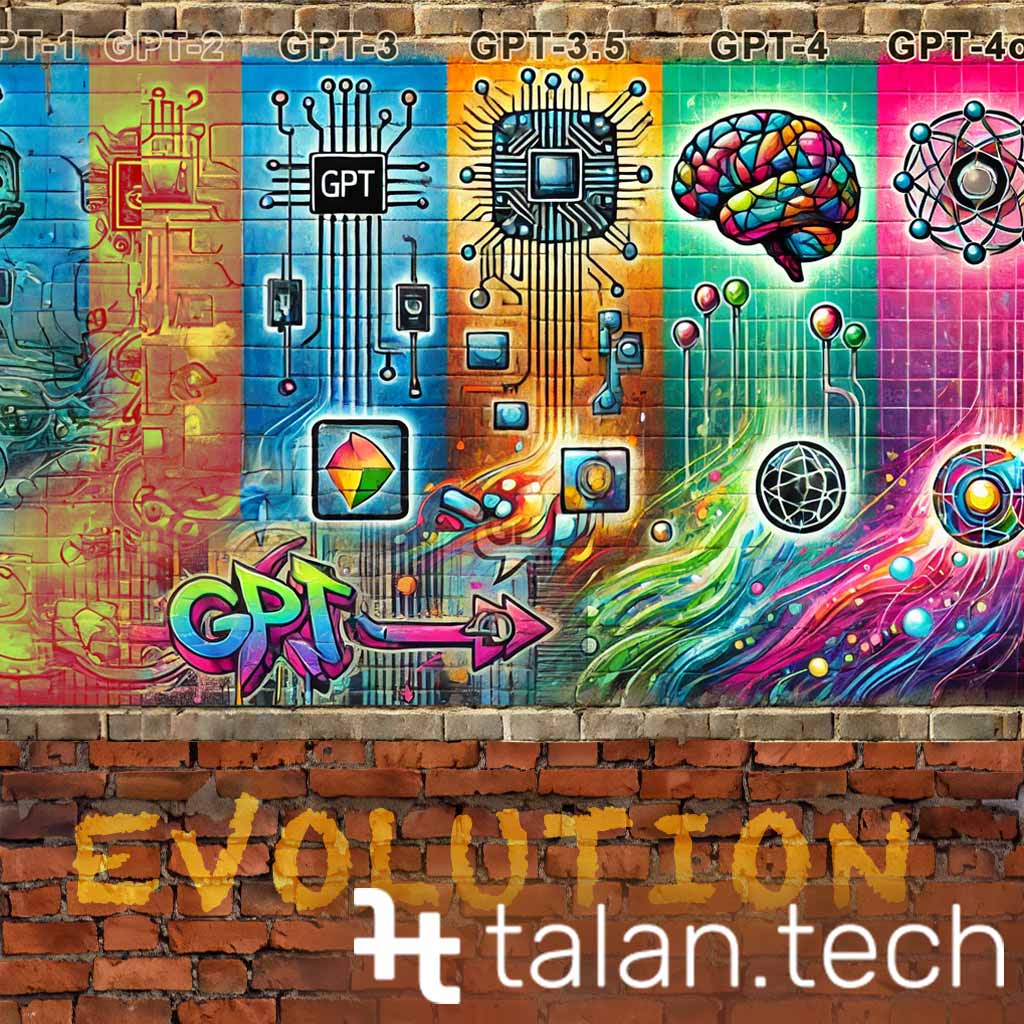Introduction
AI has revolutionized many industries, and one of the most prominent areas of impact has been the development of chatbots. AI chatbots have evolved significantly over the years, transforming from simple, rule-based systems to advanced conversational agents powered by large language models. This article explores the evolution of AI chatbots, focusing on the progression from GPT-1 to ChatGPT-4o, highlighting their key features, capabilities, advancements, and current usage trends.
The Beginning with GPT-1
GPT-1, or Generative Pre-trained Transformer 1, was introduced by OpenAI in 2018. It marked the initial foray into the use of transformer-based architectures for natural language processing (NLP). GPT-1 had 117 million parameters and demonstrated the feasibility of pre-training a language model on a large corpus of text and then fine-tuning it for specific tasks.
Key Features of GPT-1:
- Transformer Architecture: Utilized the transformer model, which was a significant innovation over previous recurrent neural network (RNN) approaches.
- Pre-training and Fine-tuning: Introduced the concept of pre-training on a general text corpus followed by fine-tuning on task-specific data.
- Foundation for Future Models: Laid the groundwork for more advanced models by demonstrating the effectiveness of transformer-based architectures in NLP tasks.
The Genesis of GPT-2
Building on the success of GPT-1, OpenAI released GPT-2 in 2019. GPT-2 was a significant leap forward, featuring 1.5 billion parameters. It demonstrated substantial improvements in generating coherent and contextually relevant text, making it a game-changer for chatbots.
Key Features of GPT-2:
- Large-scale Training Data: GPT-2 was trained on a diverse dataset from the internet, allowing it to generate text across various topics and domains.
- Contextual Understanding: It could maintain context over several sentences, enabling more coherent conversations.
- Flexibility: GPT-2 could be fine-tuned for specific tasks, making it adaptable for different applications, including customer service and content creation.
The Advancement to GPT-3
Building on the success of GPT-2, OpenAI introduced GPT-3 in 2020. GPT-3 significantly expanded the capabilities of its predecessor, featuring 175 billion parameters. This massive increase in parameters allowed GPT-3 to generate even more accurate and contextually appropriate responses, enhancing its utility as a chatbot.
Key Features of GPT-3:
- Enhanced Performance: With more parameters, GPT-3 improved in generating human-like text, understanding context, and producing relevant responses.
- Few-shot and Zero-shot Learning: GPT-3 could perform tasks with minimal examples, demonstrating its adaptability and generalization capabilities.
- Versatility: It found applications in various domains, including coding, writing, and conversational agents, making it a versatile tool for developers.
Transition to GPT-3.5
GPT-3.5 represented an iterative improvement over GPT-3, focusing on refining the model’s accuracy, efficiency, and safety. This version aimed to address some limitations of GPT-3, such as reducing biases and improving the reliability of responses.
Key Features of GPT-3.5:
- Refined Training Techniques: Enhanced training methods resulted in better performance and reduced biases in generated text.
- Improved Safety Measures: GPT-3.5 incorporated better safety protocols to mitigate harmful or inappropriate content generation.
- Optimized Efficiency: Improvements in model architecture and training efficiency made GPT-3.5 more accessible and cost-effective for practical applications.
The Leap to GPT-4 AI Chatbots
GPT-4, introduced in 2023, represents a substantial advancement in conversational AI. With an even larger parameter count and more sophisticated training methods, GPT-4 aims to set new standards for AI chatbots.
Key Features of GPT-4:
- Unprecedented Scale: GPT-4 boasts a significantly larger number of parameters, enhancing its ability to understand and generate human-like text.
- Advanced Contextual Understanding: Improved algorithms enable GPT-4 to maintain context over longer conversations, providing more coherent and relevant interactions.
- Enhanced Customization: Users can fine-tune GPT-4 for specific tasks and domains with greater ease, making it highly adaptable for various applications.
- Ethical and Safe AI: Emphasis on ethical AI development ensures that GPT-4 generates safe and appropriate content, reducing the risk of harmful outputs.
The Development of AI Chatbots ChatGPT-4o
Building on the foundation of GPT-4, ChatGPT-4o is an optimized version designed specifically for real-time conversational applications. It focuses on reducing latency and improving the efficiency of responses without compromising the model’s accuracy and contextual understanding.
Key Features of ChatGPT-4o:
- Optimized for Real-time Interaction: Enhanced algorithms ensure quick response times, making it ideal for applications requiring rapid interaction.
- Resource Efficiency: Streamlined architecture reduces computational overhead, making it more accessible for deployment in various environments.
- Consistency in Conversations: Maintains high levels of contextual accuracy and relevance, ensuring a seamless user experience.
- Scalable Solutions: Designed to handle large-scale interactions, making it suitable for enterprise-level applications.
Current AI Chatbots Usage Trends and Popularity
As of today, the following trends and data highlight the usage and popularity of different versions of GPT models:
- GPT-1: People primarily use GPT-1 for educational purposes and small-scale experimental projects. Its limited capabilities make it less common in commercial applications compared to later versions.
- GPT-2: Although more advanced models have largely surpassed GPT-2, it remains popular in academic settings and smaller-scale applications due to its lower computational requirements and ease of use.
- GPT-3: Various industries, including customer service, content creation, and programming assistance, widely use GPT-3. Its vast capabilities and versatility make it a staple for many businesses.
- GPT-3.5: As an iterative improvement over GPT-3, GPT-3.5 is favored for applications requiring higher accuracy and reduced biases. It’s increasingly adopted for tasks demanding more reliable outputs.
- GPT-4: GPT-4 is currently the go-to model for cutting-edge applications, offering unparalleled performance in generating human-like text and maintaining long-term contextual understanding. People use it in advanced conversational AI systems, including customer support, virtual assistants, and more complex content generation tasks.
- ChatGPT-4o: Designed for real-time interactions, ChatGPT-4o is gaining popularity in live customer service, chat applications, and other real-time communication platforms. Its efficiency and speed make it ideal for high-demand environments where quick response times are critical.
Conclusion
The evolution of AI chatbots from GPT-1 to ChatGPT-4o highlights the rapid advancements in natural language processing and conversational AI. Each iteration has brought significant improvements in terms of scale, contextual understanding, and safety, making AI chatbots more capable and reliable. As we continue to push the boundaries of AI, the future of chatbots looks promising, with the potential to revolutionize industries and enhance user experiences across the globe.





